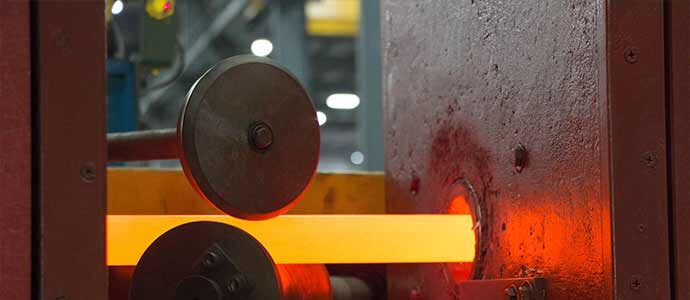
The Process of Quench and Tempering Steel Bar
In the quenching and tempering process, steel is heated up in a precise way, then rapidly cooled, which modifies a metal’s microstructure. It’s used in a range of industries for producing bearings, aircraft components, tooling, and other components. Similar to other heat treatments, the goal of quenching and tempering is to alter the physical and mechanical properties of the steel. Heat treatments can be performed before, after, or in between manufacturing steps to create the desired characteristics.
The Quenching & Tempering Steel Bar Process
- Austenitizing Cycle: The first step is to heat the material above a critical temperature. This point, known as the austenitic temperature, is usually at or above 1,575 degrees Fahrenheit.
- Quenching: Once the steel reaches this extreme temperature, it’s rapidly quenched in a liquid. The medium is usually water, although oil can be used as well. A rapid quenching is necessary to suppress the change from austenite to pearlite in the steel structure. This suppressed structure is known as martensite. The microstructure of martensite creates a hard steel bar.
- Tempering: The mechanical and physical properties are further altered through tempering, which is performed at lower temperatures.
It’s important to note that the exact level of heat and cool-down time can alter the final characteristics of steel products. A leading heat treatment provider can identify the optimal temperature and timing of steps to ensure the highest levels of consistency and integrity.
Benefits of Quench & Tempered Steel Bar
This process provides stress relief for steel bar, so it’s ideal for products that go through a harsh manufacturing process that may have created stress. Quenching and tempering is a way to restructure the steel grain and reduce the brittleness that comes from high-impact manufacturing or other processing steps.
This process also increases consistency throughout steel bar. Instead of case hardening approaches, quenching and tempering increases strength and reduces brittleness throughout the bar or component.
Additionally, mon-symmetrical part manufacturing can create brittleness and distortion. Quenching enhances durability in a symmetrical way to combat distortion in finished parts. It can smooth out any inconsistencies in the steel bar, whether naturally in the steel or introduced as part of your manufacturing process.
- Increased Strength
- Increased Toughness
- Less Distortion
- Predictable Physical Properties
Learn More Today
King Steel Corporation is an industry-leading provider of steel bar, wire rod, and wire products. We also provide extensive processing capabilities, including quenching and tempering. You can visit our website to learn more about our specific capabilities, or visit our blog for more informational resources.